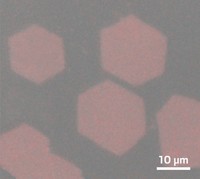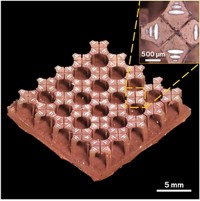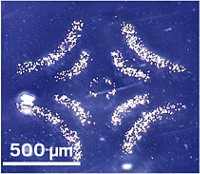Advertisement
Grab your lab coat. Let's get started
Welcome!
Welcome!
Create an account below to get 6 C&EN articles per month, receive newsletters and more - all free.
It seems this is your first time logging in online. Please enter the following information to continue.
As an ACS member you automatically get access to this site. All we need is few more details to create your reading experience.
Not you? Sign in with a different account.
Not you? Sign in with a different account.
ERROR 1
ERROR 1
ERROR 2
ERROR 2
ERROR 2
ERROR 2
ERROR 2
Password and Confirm password must match.
If you have an ACS member number, please enter it here so we can link this account to your membership. (optional)
ERROR 2
ACS values your privacy. By submitting your information, you are gaining access to C&EN and subscribing to our weekly newsletter. We use the information you provide to make your reading experience better, and we will never sell your data to third party members.
Materials
Stamping Electronics
Simple process could deliver next-generation electronics
by Bethany Halford
December 18, 2006
| A version of this story appeared in
Volume 84, Issue 51
Two recent advances in device fabrication could help move transistors off silicon wafers and onto flexible plastic substrates. There, they could be made into bendable electronic paper and skin-conforming sensors.
Although the reports describe the fabrication of very different devices—one combines dissimilar classes of semiconductors, and the other consists of large arrays of single-crystal organic transistors—a silicone-stamping technique is key to both processes.
Electronics makers have been trying to create flexible electronic screens for years, but translating the technology that's been so successful on rigid silicon to pliable plastic has been a challenge. The main problem has been getting semiconductors, which are frequently grown at high temperature, onto flexible materials in a way that maintains performance but is also amenable to mass production. Unlike silicon, plastics can't tolerate high-temperature processing without getting gooey.
John A. Rogers and coworkers at the University of Illinois, Urbana-Champaign, have been able to put a wide variety of materials onto flexible plastic by stamping. The group first grows semiconducting nanoparticles on one substrate. They then employ a soft silicone polymer to transfer the particles onto a flexible substrate in the same way that a rubber stamp transfers ink to paper.
Now, through repetitive stamping, Rogers' team has efficiently combined broad classes of material, such as single-walled carbon nanotubes, silicon ribbons, and gallium arsenide nanowires, onto a single device (Science 2006, 314, 1754). "Important new types of electronic systems will rely on the ability to mix and match wide-ranging classes of devices in 3-D configurations on unusual substrates," Rogers explains.

Silicone stamping also is at the heart of the new fabrication process reported by Stanford University's Zhenan Bao and colleagues. In Bao's technique, however, the stamping doesn't transfer the semiconducting material. Instead, it lays the groundwork for low-temperature semiconductor growth. Bao and coworkers use a stamp to deposit a patterned organic layer of significant roughness onto the substrate.
Organic semiconductors such as rubrene and C60 nucleate at these rough spots, growing into arrays of single-crystal organic semiconductors (Nature 2006, 444, 913).
"This work demonstrates for the first time that organic single crystals can be patterned over a large area without the need to laboriously handpick and fabricate transistors one at a time," Bao says.





Join the conversation
Contact the reporter
Submit a Letter to the Editor for publication
Engage with us on Twitter